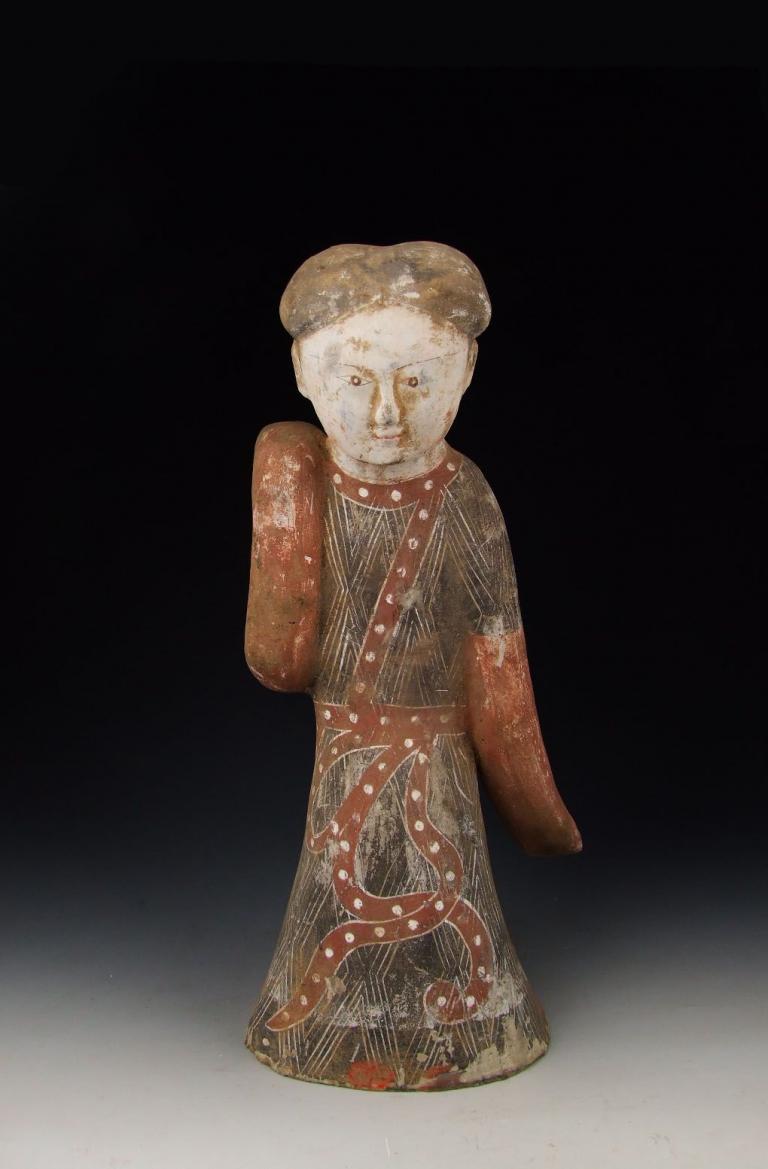Pottery figurines of Western and Eastern Han Dynasties
3 min readThe Han rulers carried on the systems of Qin. However, at the first few decades of the dynasty, due to the impact left over by wars, they could not afford to produce massive pottery figurine clusters. Therefore, the vigour and craftsmanship of Han pottery figurines could not match with that of Qin. Nonetheless, these pottery figurines boasted their own characteristics of simple forms and smooth lines. The technique of producing Qin figurines was also kept, and the Han pottery figurines appeared in form of terra-cotta warriors and horses as well, which might result fromincessant warfare against the Hun in early period of the empire.
So far, large numbers of terra-cotta warriors, horses, escorts and servants of the Han dynasty have been excavated in burial pits of imperial mausoleums near Xi’ an and in tombs of Han seigneurs such as in Xuzhou, but all bore clear distinctions from the terra-cotta army of Qinshihuang both in species and style. For instance, figurines of cavalries, infantries, musicians and dancersdiscovered in burial pits of Yangjiawan in Xianyang, are totally different from figurines of Qin in that they were painted with colourful robes in red, white, yellow, green and other colours, and the back of some figures and horses were markedwith numbers. Rather than the martial spirit felt on the Qin figurines, their facial expressions look dignified and calm, as they were applied to signify status and power of tomb owners, reflecting the wish of those nobles to continue enjoying lavish life after death. No taller than 70 centimeter each, they are also much shorter than the life-sized Qin figurines. In terms of costumes, Qin terra-cotta warriors mainly wear armors, while Han figurines mainly wear robes. It’s also rather obvious that the workmanship of Han terra-cotta figurine making had been simplified from that of Qin. They look casual and hasty, and are less realistic and vivid than Qin figurines.

The naked pottery figurines excavated from burial pits of imperial mausoleums near Xi’ an are the most renowned pottery figurines of the Western Han dynasty.
Although not as spectacular as those of Qin, they display a high mastery of techniques. Made of carefully cleansed clay, they boast solidity and delicacy. Thevarious parts of their bodies were separately made by molds and then assembled.
Trace of linen fabrics is discerned on some of the figurines, which indicates that they were dressed rather than painted with clothes, but only their naked bodies remain when these clothes rotted as time went by. These figurines also present vivid facial ex pressions with lifelike organs, varying by their genders and ages.
Motifs of pottery figurines of the Eastern Han dynasty became far more diversified than those of Western Han, when more attentions were attached to theportrait of daily life. Models of buildings and courtyards turned up in tombs to reproduce the life scene of landlords. Besides, during the period, due to influence from the Western Region, music, dancing and acrobatics became popular in the Central Plains. As a result, new figurine categories such as storytellers, dancers and acrobats took shape. The growth of diversity also promoted the improvement of figurine crafts, and artisans of the time already managed to present the verve offigures. Pottery figurines produced thereby are not as realistic as earlier ones, but are usually applied with methods of comparison and exaggeration to vividly depict their gestures and expressions, so as to emphasize the different identities of figurines, thus were generally livelier than pottery figurines of Qin. Meanwhile, the Eastern Han dynasty also witnessed the mass application of animal figurines, especially livestock raised by people.









